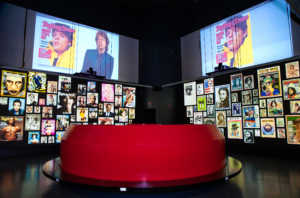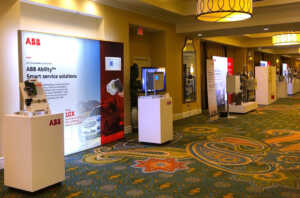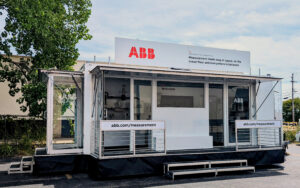Blog
How to Create a Successful Traveling Exhibit
Creating an impactful traveling exhibit requires careful planning and attention to detail. Whether you're a museum curator showcasing valuable artifacts or a marketing manager organizing a corporate roadshow, understanding the key components for success will help ensure your traveling exhibition captivates audiences at every venue.
Versatile and Mobile Display Design
The foundation of an effective traveling exhibit lies in displays designed with modularity in mind. Use flexible systems that adapt to various venue spaces while maintaining a cohesive and professional appearance. Look for lightweight yet durable materials that withstand repeated assembly and disassembly without compromising visual appeal. Easily reconfigurable components that optimize your exhibit for different locations ensure a consistent experience regardless of the venue's size or layout.
Engaging Visual Elements and Interactive Experiences
The heart of any compelling traveling exhibit is its ability to engage visitors on multiple sensory levels. When visitors approach your exhibit, interactive touchscreens and hands-on components immediately invite them to become active participants rather than passive observers. These interactive elements create personal connections with your content, allowing visitors to chart their journey through the information at a pace that suits them.


As visitors move through your space, well-designed directional signage guides them along a planned route that reinforces your key messages and storyline. Carefully spaced audio and video elements enrich the experience and add a layer of context that static displays alone cannot provide. You can also include digital displays that enable customized content based on local audiences or venues, and you can use QR codes to educate and tell your story further. Finally, strategic lighting transforms ordinary displays into captivating focal points.
A seamless blend of digital and physical elements creates an immersive experience that resonates with today's audiences while remaining adaptable to the unique challenges of traveling exhibitions.
Comprehensive Logistics and Venue Planning
Develop a comprehensive schedule that accounts for transportation time, setup periods and the exhibition duration at each site. Provide comprehensive instruction manuals and tool kits for each installation. Detailed assembly instructions, schematics, photos and packing procedures can make all the difference in ensuring your exhibit looks polished and consistent at every stop.
To safeguard your exhibit during transit and at each venue, consider methods to ship, display and store your components securely. High-quality shipping cases and crates protect components during transport. Locking cabinets used in your display can provide a place to store valuable items before, during and after event hours. And locking display cases offer both protection and presentation during the event.
Finally, understand what each venue offers regarding utilities and logistics. Start by assessing each location's available space, power supply and any other utility requirements you may need. Make sure your exhibit components will fit through standard doors and elevators, as not all venues have loading docks or freight elevators. Aim for pieces that can be carried by one or two people in case pallet jacks and tow motors are not readily available.
Special Considerations for Roadshow Trailers
Are you planning to move a roadshow trailer between cities? In that case, you'll need to check if your trailer or load requires special hauling permits (especially if it's oversized or you're crossing state lines), ensure your vehicle and trailer are properly registered and obtain any necessary temporary trip permits for commercial or heavy vehicles. In each city, you'll likely need special event permits for public gatherings or sales, possibly a vendor or sales license if you're selling goods, and additional health or alcohol permits if you plan to serve food or drinks. To find out exactly what you need, check each state's Department of Transportation website for hauling rules and contact local city offices for event and vendor requirements.
Looking for a Branded Roadshow or Roadshow Trailer? Visit our Roadshow Events page to learn more.
Achieve Traveling Exhibit Success with Rogers
Addressing these essential elements allows you to create a traveling exhibit that effectively communicates your message while minimizing logistical challenges. The most successful traveling exhibits strike a balance between visual impact, practical considerations and audience engagement, ensuring a memorable experience at every stop on your tour. Contact our team today and discover how Rogers can help bring your vision to life.




